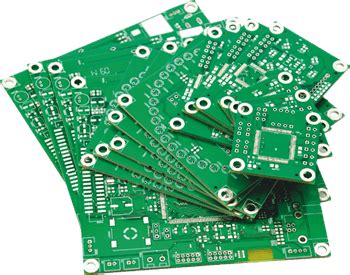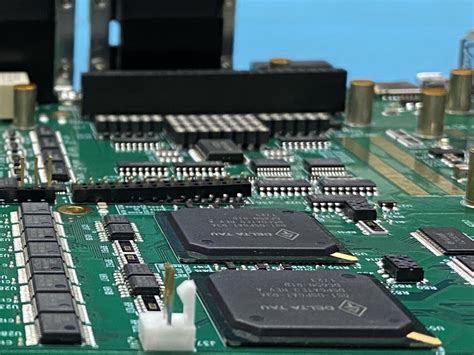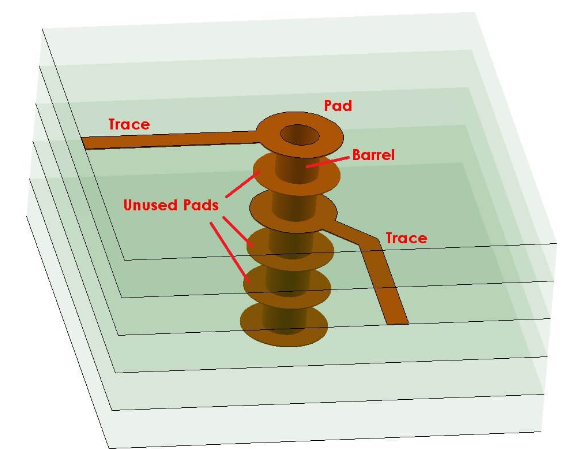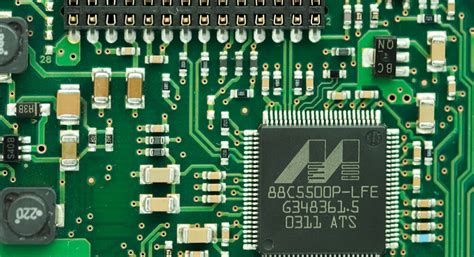Common problems and improvement suggestions for mobile phone electromagnetic compatibility testing
This article analyzes the common problems in mobile phone electromagnetic compatibility testing, including electrostatic discharge immunity test, electrical fast transient pulse group immunity test, radiated interference and conducted interference performance test, and puts forward corresponding suggestions for improving the electromagnetic compatibility performance of mobile phones.
1.Electrostatic discharge immunity test
1.1 Common problems in electrostatic discharge immunity test
The problems in electrostatic discharge immunity test are mainly manifested in the following aspects.
(1) Mobile phone call interruption.
(2) Electrostatic discharge causes some functions of the mobile phone to fail, but the failed functions can be restored after the electrostatic discharge process ends or the mobile phone is restarted. These phenomena may be: abnormal screen display, such as white screen display, stripes, garbled display, blurred display, etc.; problems with call quality, such as howling or sound disappearance; loss of key function or touch screen function; software false alarms, such as frequent prompts of “charging connected, charger removed” when the charger is not plugged in or unplugged.
(3) The mobile phone automatically shuts down or restarts.
This problem may occur during a call or during standby.
(4) Electrostatic discharge causes the phone to fail or be damaged.
Due to the damage of some components, some functions of the phone cannot be restored after restarting, such as the camera function; the phone cannot be turned on again after it is automatically turned off; when the charger is connected for testing, the charger may fail, be damaged or even explode.
1.2 Specific analysis of electrostatic discharge problems
(1) Call interruption: The main reason for call interruption is that electrostatic discharge affects the RF circuit and/or baseband circuit inside the phone, causing a decrease in the communication signal-to-noise ratio and signal synchronization problems, which leads to call interruption.
Unreasonable structural design may also cause call interruption. In the electrostatic discharge test, a large-area horizontal coupling plate made of metal is required, and only a 0.5 mm thick insulating pad is placed between the phone and the horizontal coupling plate. When the antenna or a large-area metal part is too close to the horizontal coupling plate, mutual coupling may occur, resulting in a significant decrease in the actual sensitivity of the mobile phone. The call is more likely to be interrupted during the electrostatic test. In severe cases, the mobile phone cannot maintain a call even without electrostatic interference.
(2) Automatic shutdown or restart: The reset circuit of the baseband circuit is interfered by static electricity, causing the mobile phone to shut down or restart by mistake.
(3) Mobile phone failure or damage: High voltage and high current during electrostatic discharge cause thermal failure or insulation breakdown of the device. The strong electromagnetic field during electrostatic discharge may also cause the device to temporarily fail.
(4) Software failure: The electrostatic interference signal is treated as a useful signal, causing the operating system to respond incorrectly.

1.3 Suggestions for improving electrostatic discharge problems
(1) Consider electrostatic discharge problems in the design scheme
Try to select devices with high electrostatic sensitivity levels; isolate the device from the electrostatic source; and reduce the loop area (the larger the area, the greater the field flow contained, and the greater the induced current).
Specific measures may include: the shorter the trace, the better; the closer the power supply and ground are, the better; when there are multiple sets of power supplies and grounds, connect them in a grid manner; too long signal lines or power lines must be arranged in an interlaced manner with the ground line; the closer the signal line is to the ground line, the better; all components are as close as possible; the closer the same characteristic devices are, the better; ground plane design: try to use a complete ground plane on the PCB; the larger the PCB grounding area, the better; no large gaps; the PCB ground line needs to have low impedance and good isolation; the power supply and ground layout is better in the middle of the board than around it; place high-frequency bypass capacitors between the power supply and ground; protect static sensitive components.
(2) Suggestions for rectification after static electricity problems occur For the above-mentioned static electricity discharge problems, the following steps need to be taken to rectify them.
a) Try direct discharge and indirect discharge, air discharge and contact discharge to confirm the coupling path;
b) Discharge from different directions, observe the differences in the phenomena, and determine all discharge points and discharge paths;
c) From low to high, test at different voltages to determine in which voltage range the mobile phone fails to meet the requirements;
d) Test several prototypes, analyze the commonalities, and confirm the cause of failure;
e) Determine the relevant sensitive devices based on the coupling path, failure phenomenon, and discharge path;
f) Develop solutions for sensitive devices;
g) Verify and correct the solutions through experiments. The following measures can be taken in the rectification. For problems with housing gaps, buttons, and FPCB, dielectric isolation can be used to deal with them; for problems with cameras, microphones, and receivers, dielectric isolation and enhanced grounding can be used to deal with them; for chips with shielding shells, shielding effects can be strengthened and shielding shells can be strengthened to strengthen grounding; for interface circuits and pins of key chips, they should be protected by using protection devices (such as TVS tubes and ESD protection devices); for software failures, some logical judgments can be added to correctly detect and process alarm information to improve the problem

2.Electrical fast transient pulse group immunity test
2.1 Overview of electrical fast transient pulse group immunity test
The principle of electrical fast transient pulse group generation is as follows: when the inductive load (such as relays, contactors, etc.) is disconnected, transient interference is generated at the disconnection point due to insulation breakdown of the switch contact gap or contact bounce. When the inductive load is repeatedly switched on and off, the pulse group will be repeated many times with corresponding time intervals. This transient interference has small energy and generally does not cause damage to the equipment, but due to its wide spectrum distribution, it will affect the reliable operation of the mobile phone. This test is a test that couples a pulse group composed of many fast transient pulses to the power port of the mobile phone.
The characteristics of the test pulse are: short transient pulse rise time, repeated occurrence, and low energy. The purpose of this test is to test the performance of the mobile phone when it is affected by this type of transient interference. It is generally believed that the reason why electrical fast transient pulse groups cause malfunctions of mobile phones is that the pulse group charges the semiconductor junction capacitance in the line. When the energy on the junction capacitance accumulates to a certain extent, it will cause malfunctions of the mobile phone. Specifically, the mobile phone communication is interrupted, the phone freezes, software alarms, and the control and storage functions are lost during the test.
2.2 Analysis of Common Problems in the Electrical Fast Transient Pulse Group Immunity Test
The electrical fast transient pulse waveform is directly transmitted into the mobile phone through the charger, resulting in excessive noise voltage on the mainboard circuit. When the live wire or the neutral wire is injected alone, although the common mode injection to the ground is adopted, there is differential mode interference between the live wire and the neutral wire, and this differential mode voltage will appear at the DC output end of the charger. When the live wire and the neutral wire are injected at the same time, there is common mode interference, but it has little effect on the output of the charger. The reasons for the problems of the mobile phone during the test are complex, which are specifically manifested in the following aspects.
The EFT pulse group suppression function was not considered in the early design, and no relevant filtering components were added.
The isolation of cables was not taken into account during the PCB design and integrated wiring. The motherboard grounding design did not meet the specifications. In addition, no shielding protection measures were taken for key components. The manufacturer did not select reliable key components when selecting component suppliers, which led to component aging or failure during the test, making it easy to be interfered by EFT pulses. During the production and assembly of the whole machine, problems with the processing technology and assembly level may lead to poor product consistency, and some mobile phones submitted for inspection have quality problems. During the inspection process, rectification was required due to problems with other test items, and the selection of rectification plan may affect the failure of the EFT pulse group test.
2.3 Improvement suggestions for issues related to EFT pulse group immunity test
For the problems in the EFT pulse group interference test, filtering and absorption can be used to suppress EFT pulses.
(1) In the early stage of mobile phone design, the design of suppressing EFT pulse group interference should be given priority consideration.
Filtering should be done well at the power input position of the PCB layer. Usually, a combination of large and small capacitors is used. According to the actual situation, a first-level magnetic bead can be added to filter out high-frequency signals. Surface packaging should be used as much as possible; the common impedance value of the PCB ground wire should be minimized; the PCB layout should keep the interference source away from sensitive circuits as much as possible; various PCB traces should be as short as possible; the loop area should be reduced; when wiring, attention should be paid to the isolation of strong and weak current wiring, and the isolation of signal lines and power lines. Integrated wiring is a very important design component of the system. A bad integrated wiring pattern may ruin the stability of a well-designed PCB; key sensitive chips need to be shielded; the software should correctly detect and process alarm information and restore the product status in time.
(2) Reliable chips should be used for component selection.
It is best to have undergone chip-level electromagnetic compatibility simulation tests. The selection of reliable chargers, data cables and batteries can improve the ability to suppress electrical fast transient pulse signals;
(3) Manufacturers should strictly control quality during assembly and production, do a good job in production process control, try to ensure product quality consistency, and reduce the phenomenon of test failures caused by quality problems of individual mobile phones;
(4) If problems occur during the EFT test, the method of adding a magnetic ring or an electrical fast transient pulse group filter to the charger can be used for rectification. The smaller the inner diameter, the larger the outer diameter, and the longer the length of the magnetic bead, the better. The rectification method of adding a TVS tube has limited effect;
(5) According to the latest GB/T 17626.4-2008 standard requirements, the repetition frequency will increase to 100 kHz, which will be more severe than 5 kHz. Manufacturers should pay attention to the relevant electrical fast transient pulse group test protection work as soon as possible.
3.Radiated disturbance and conducted disturbance
3.1 Specific situations of radiated disturbance and conducted disturbance related problems
Radiated disturbance test is easy to fail in the frequency range of 30 MHz-100 MHz and 200 MHz-900 MHz, while conducted disturbance is easy to fail in the frequency range of 5 MHz-30 MHz.
3.2 Analysis of problems related to radiated disturbance and conducted disturbance
Radiated disturbance and conducted disturbance test are electromagnetic compatibility tests conducted when the charger is used to charge the mobile phone while the mobile phone maintains the communication state and the maximum transmission power. The test results are the test results when the mobile phone and the charger work together. The reason for failure may be caused by the charger, the mobile phone itself, or the poor compatibility when the mobile phone and the charger work together.
The reasons for the problem may be the following aspects.
The charger and mobile phone did not fully consider the electromagnetic compatibility performance in the initial design stage;
During the design, the electromagnetic compatibility of radiated interference and conducted interference was not designed and corresponding countermeasures were not taken;
The electromagnetic compatibility of the components selected for the charger and mobile phone was not good or the quality did not meet the requirements;
When the mobile phone selected the charger, the electromagnetic compatibility between the mobile phone and the charger and the matching of the mobile phone and the charger were not fully considered. The mobile phone is a nonlinear load. When ringing and talking, if the battery is low and charging, the energy consumed is very large, and there will be a large impact current. In this way, if the selected charger is not matched or the output current is too small, the charger will cause full load or overload during the test, resulting in electromagnetic compatibility problems, and even more seriously, safety problems. In addition, if the charging is not normal, it will also cause abnormal operation of the mobile phone components and electromagnetic compatibility problems. Mutual interference between the charger and the mobile phone will also cause the test results to exceed the standard;
Before the test, the mobile phone and the charger did not cooperate in the electromagnetic compatibility pre-test. The charger may have done the electromagnetic compatibility test using the load alone, and the test results cannot reflect the results of the joint test with the mobile phone.
3.3 Suggestions for improvement of issues related to radiated disturbance and conducted disturbance
(1) During the design phase, the electromagnetic compatibility characteristics should be fully considered, and the grounding design of the circuit board should be reasonably considered. The grounding loop should be kept as small as possible, and grid grounding should be used. The signal line or power line should be as close to the ground line as possible. During the design process, filtering measures should be taken for the charging port of the charger and the mobile phone, and shielding measures should be taken for components sensitive to radiation emission, and shielding covers should be added.
(2) Select components with good quality and good electromagnetic compatibility characteristics.
(3) Optimize the position, layout and wiring of components. Component layout has always grouped components according to function and device type. For example, for circuit boards with both analog circuits and digital devices, the devices can be grouped and laid out according to operating voltage and frequency; for a given product series or power supply voltage, the devices can be grouped according to function. After the device grouping layout is completed, the power supply layer must be arranged under each device group according to the difference in power supply voltage of the component group. If there are multiple layers of ground, the digital ground layer must be close to the digital power layer, the analog ground must be close to the analog power layer, and the analog ground and digital ground must have a common ground point. Usually, there are A/D or D/A devices in the circuit. These conversion devices are powered by both analog and digital power supplies. Therefore, the converter should be placed between the analog power supply and the digital power supply. If the digital ground and the analog ground are separate, they will converge at the converter. When the circuit board is grouped according to the device series and power supply voltage, the transmission of the signal within the group cannot cross other device groups. If the signal crosses the boundary, it cannot be tightly coupled with its return path, which will increase the loop area of the circuit, thereby increasing the inductance and reducing the capacitance, which will lead to an increase in common-mode and differential-mode interference. Various isolation zones should be avoided during the circuit board design process. Although a row of vias that are very close to each other does not violate the design rules, too many vias on the power layer and the ground layer are sometimes equivalent to opening an isolation zone. Avoid wiring in this area. For example, if a 3 ns signal loop deviates fromIf the signal source path is 0.40 inches, the overshoot/undershoot and induced crosstalk will increase greatly, enough to cause abnormal circuit operation and increase differential and common mode interference at the same time.
(4) Fully consider the compatibility and matching of the charger and the mobile phone.
The output current of the charger should be greater than the peak current of the mobile phone. Before selecting a matching charger, the corresponding charger should be used with the mobile phone to perform pre-tests of radiated interference and conducted interference to verify the electromagnetic compatibility characteristics between the two and select a charger with good electromagnetic compatibility characteristics.
(5) Post-corrective measures
Analyze the test results and listen to the suggestions of the electromagnetic compatibility test engineer. For the radiated interference test, confirm through the test whether the charger has a greater impact on the test results or the mobile phone has a greater impact. Generally, if the low frequency exceeds the limit, the charger has a greater impact, and if it is high frequency, the mobile phone may have a greater impact; the conducted interference test also needs to confirm which impact is the main factor. If the impact of the charger is the main factor, first confirm whether the various components of the charger are working properly; if there is a problem with a certain component, replace the corresponding component before testing. Adding filter capacitors or improving the corresponding filter circuits will improve both radiated interference and conducted interference. If it is confirmed that the problem is with the mobile phone, determine the source of the frequency exceeding the limit, and shield the corresponding devices: strengthen the shielding characteristics; improve the grounding of the shield; increase the corresponding filter capacitor or adjust the filter circuit; improve the corresponding matching circuit to reduce harmonic or mixing interference; strengthen the filtering and grounding of the mobile phone charging circuit, etc. Use a good charging cable. It is recommended to use a shielded cable that can be grounded at both ends. Adding a ferrite magnetic ring on the mobile phone side or the charger side may have a certain improvement on the radiated interference, but sometimes has little effect on the conducted interference. The corresponding frequency of the magnetic ring should be selected according to the test frequency.
In summary, for radiated interference and conducted interference, the following principles should be grasped:
a) Pay attention to the electromagnetic compatibility design in the design stage;
b) Pay attention to the matching of the charger and the mobile phone;
c) Select excellent components.

Conclusion
The electromagnetic compatibility performance of a mobile phone is directly related to the various performances of the mobile phone. Ensuring the electromagnetic compatibility performance of a mobile phone is an important part of ensuring the quality of the mobile phone. Therefore, the electromagnetic compatibility test and design of the mobile phone cannot be ignored.






